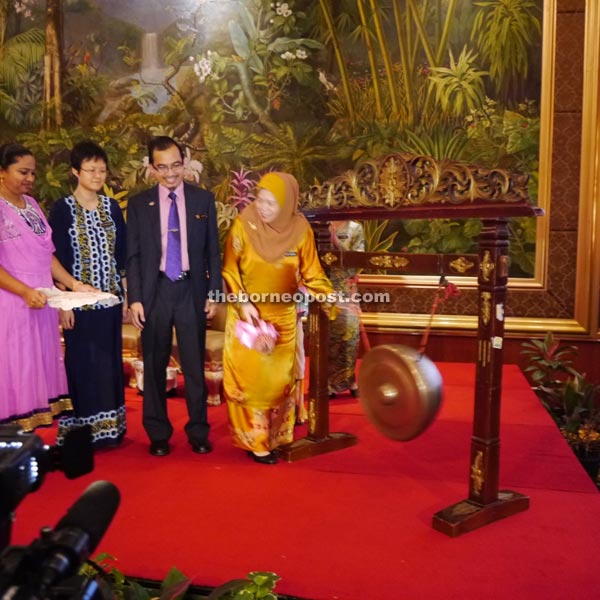KOTA KINABALU: A total of 133 HIV cases were recorded in Sabah from January to June this year. The state also recorded 52 AIDS cases and 22 deaths due to the disease, according to Deputy Women, Family and Community Development Minister Datuk Azizah Mohd Dun said.
“Of the 133 HIV cases reported, 93 were male cases, while the remainder involved females. There were only two cases involving the Malays, 15 cases involving the Chinese, 17 cases involving foreigners and 99 cases involving other races,”she said.
Azizah said the disease was spread through five modes – the sharing of needles for drug use with an infected person, sexual intercourse, an HIV positive mother, blood transfusion and organ transplant.
“A majority of the women got infected with HIV/AIDS due to heterosexual activities,” she said.
Azizah said more women are found infected with the human immunodeficiency virus (HIV) in the country.
She said there were 728 new cases involving women nationwide in 2013. The total number of new detected HIV/AIDS cases nationwide in 2013 were 3,393.
“Initially, the HIV/AIDS epidemic was concentrated on men, but the trend is changing. The infection rate involving men and women was 9.6 percent in the year 2000, 4.5 percent in the year 2010 and 3.7 percent in the year 2013,” she said at the 2014 HIV/AIDs and Women seminar here yesterday.
Azizah said statistics from the Health Ministry showed that there were 1,676 HIV cases, 598 AIDS cases and 402 deaths due to the disease in the first half of this year. Of the total number of 1,676 HIV cases, 1,337 cases involved males and the rest females.
The statistics also showed that nationwide, the number of cases involving Malays was the highest at 874 cases, followed by the Chinese with 323 cases, Indians at 117 cases, foreigners with 161 cases and other races with 199 cases.
On the impact of the disease, Azizah said that the National Strategic Plan on HIV and AIDS from 2011 to 2015 found that countries with an HIV/AIDS infection rate of 20 per cent suffered from an average decline of 2.6 percent annually in their economic development.
These countries also saw an increase in the cost of caring and treating of patients with HIV/AIDS, she said.
These countries also saw a reduction in their supply of skilled workforce, a rise in their poverty rate as households lose productive breadwinners, and a reduction in quality care prepared at hospitals, she said.
“Women are also adversely impacted. The impact on women include being forced to bear the load when their husband becomes sick or dies with HIV/AIDS. They are also at risk of being infected by their husband besides the risk of infecting their children with the disease. Additionally, they also have to endure the negative perception of the people and bear the brunt of isolation by the community,”she said.
“To allow us to address the HIV/AIDS epidemic in a more systematic and effective way, the government has drafted the National Strategic Plan on HIV and AIDS 2011–2015. The strategic plan outlines the comprehensive approach that will be taken by all parties to address HIV/AIDS scourge in the country,” she said.
Azizah also said that among the initiatives taken by the government to counter the HIV/AIDS issue were to provide free medical treatment to people infected with HIV; channel allocations to non-governmental organisations (NGOs) to address the issue; conduct Harm Reduction Programmes; provide counselling and voluntary screening to detect HIV/AIDS and the provision of anti-retroviral drugs to HIV/AIDS sufferers
According to her, the first HIV case detected in Malaysia was in 1986. And, according to the Global AIDS Response Report Malaysia 2014, there were 101,672 cumulative HIV cases in the country as of December 2013.
A total of 16,340 deaths were also recorded during the same period whereas the number of HIV/AIDS cases involving women was 10,956. There were also 1,076 HIV/AIDS cases involving children below 13 years old.

